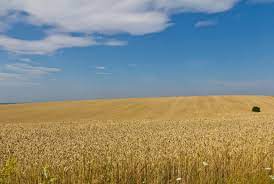Currently, crop models rely heavily on sowing dates as a critical input. However, as climate change continues the optimal sowing times will also be affected which will impact agricultural practices. Therefore, a more comprehensive understanding of the factors that influence the selection of wheat type and sowing dates is necessary to ensure reliable predictions of future crop yields.
Climate change is already altering the conditions in many wheat-growing areas, which has the potential to lead to substantial reductions in wheat yields. The use of process-based crop models and empirical relationships to project the impact of climate on yields is discussed in a paper recently published by the LEMONTREE team in Agricultural Systems.
Qiao et al describe the development and testing of an approach which involves improving the phenological module in an eco-evolutionary optimality (EEO)-based wheat growth model to predict GPP and wheat maturity as a function of climate. The assumption made is that farmers would select a sowing date that maximises yields, given that wheat could be sown at any time with appropriate climate conditions. The model was run for every possible climatically suitable day, which is determined by climate constraints such as low temperature, frost and intense precipitation. The optimal sowing date is then determined as the day that provides the highest yield in each location. The simulated optimal sowing dates were evaluated with data on observed sowing, which is created by merging census-based datasets and local agronomic information. Qiao et al. then predicted the changes in optimal sowing dates under future climate scenarios to gain insight into the impacts of climate change.

Cold-season temperatures were the major determinant of sowing dates in the extra-tropics, whereas the seasonal cycle of monsoon rainfall is important in the tropics. The model developed captures the timing of reported sowing dates, with discrepancies of less than one month over much of the world, but maximum errors of up to two months occur in tropical regions with large altitudinal gradients. In tropical regions, discrepancies between predicted and observed sowing dates are larger than in temperate and cold regions. The model shows that slight warming promotes earlier sowing in wet areas but later in dry areas, while larger warming leads to delayed sowing in most regions.
These predictions arise due to the interactions of several influences on yield, including the effects of warming on growing- season length, the need for sufficient moisture during key phenological stages and the temperature threshold for vernalization of winter wheat.
By integrating optimality concepts for simulating GPP with climate constraints on phenology, realistic predictions of what type and sowing dates can be obtained. The model provides a basis for predicting potential changes in crop calendars that could occur under future climate change. Additionally, it can be utilised to explore management options that could potentially mitigate the negative impacts of climate change on crops.
You can read the full paper here:
Qiao, S., Harrison, S.P., Prentice, I.C., Wang, H. 2023. Optimality-based modelling of wheat sowing dates globally. Agricultural Systems, 206, doi.org/10.1016/j.agsy.2023.103608

